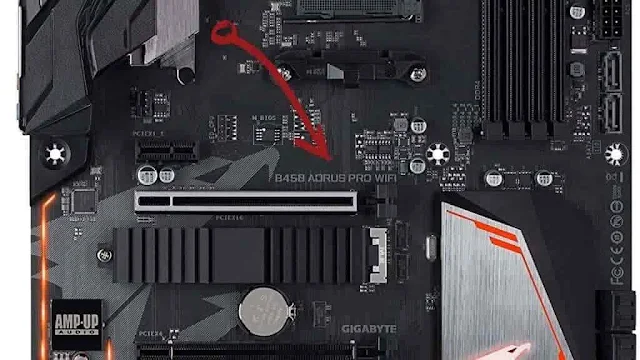Looking for an easy method to check your motherboard model? Don't worry. In this guide, we'll explore simple ways to unveil the mystery behind your computer's central hub.

Why Identify Your Motherboard?
Knowing your motherboard model can help you in various scenarios. It's crucial when upgrading components, installing drivers, or seeking technical support. Let's dive into the step-by-step process to discover the identity of your motherboard.
1. Check your system information:
The easiest way to identify your motherboard is by checking your system information. On Windows, press the "Windows" key and "R" simultaneously to open the Run dialog. Type "msinfo32" and hit Enter. In the System Information window, look for the "System Model" or "Baseboard Manufacturer" to find your motherboard's make and model.
2. Explore the BIOS:
Another method involves entering your computer's BIOS (Basic Input/Output System). Restart your computer and, during the startup process, press the designated key to access the BIOS (common keys include F2, F10, or Del). Once in the BIOS, navigate to the "Main" or "System Information" section to find details about your motherboard.
3. Utilize third-party tools:
If you prefer a more user-friendly approach, various third-party tools can automatically gather information about your system, including motherboard details. Popular applications like CPU-Z, Speccy, or HWiNFO provide comprehensive hardware information, including your motherboard's make and model.
4. Check physical labels:
For those who enjoy hands-on exploration, open your computer case and look for a label on the motherboard itself. Manufacturers often place stickers with the model information near the CPU socket or along the board's edge. Take note of any alphanumeric codes or serial numbers, which can be cross-referenced online for detailed information.
5. Online Resources and Serial Numbers:
If you've collected serial numbers or codes from your motherboard, websites like the manufacturer's official support page or third-party databases can help identify your motherboard model. Enter the details, and you'll often find product specifications and documentation.
Can I find my motherboard model using any tool or app?
Yes, you can find your motherboard model using various tools and applications.
CPU-Z:
- CPU-Z is a widely used tool that provides detailed information about your computer's hardware, including the motherboard model.
- Download and install CPU-Z, then open the application. Navigate to the "Mainboard" tab, where you'll find information about your motherboard, including the manufacturer and model.
Speccy:
- Speccy is another user-friendly tool that provides comprehensive information about your system.
- After installing Speccy, launch the application. The "Motherboard" section will display details such as the manufacturer, model, and chipset of your motherboard.
HWiNFO:
- HWiNFO is a powerful hardware information and diagnostic tool that can provide detailed information about your motherboard.
- Install HWiNFO and run the application. Navigate to the "Motherboard" section to find information about your motherboard model.
Using these tools can save you the trouble of manually checking your motherboard or accessing the BIOS. They offer a quick and convenient way to gather comprehensive information about your system, including the specific details of your motherboard.
Conclusion:
Identifying your motherboard might seem like a daunting task, but with these simple steps, you'll be able to unveil the mystery behind your computer's central nervous system.
Whether you choose to explore your system information, delve into the BIOS, use third-party tools, check physical labels, or leverage online resources, discovering your motherboard model is an essential skill for any computer enthusiast.
So, the next time you find yourself asking, "How can I tell which motherboard I have?" remember, the answers are just a few clicks away.
Frequency of Asked Questions
1. Q: How do I find out which motherboard I have without opening my computer case?
You can easily determine your motherboard without physically opening your case. On Windows, press the "Windows" key and "R" simultaneously, type "msinfo32," and hit Enter. Look for "System Model" or "Baseboard Manufacturer" in the System Information window for details on your motherboard.
2. Q: Can I identify my motherboard model using the BIOS?
A: Absolutely. Restart your computer and access the BIOS during the startup process (usually by pressing keys like F2, F10, or Del). Navigate to the "Main" or "System Information" section to find information about your motherboard, including the make and model.
3. Q: Are there user-friendly tools to help me determine my motherboard model?
Yes, several third-party tools simplify the process. Applications like CPU-Z, Speccy, or HWiNFO can automatically gather comprehensive hardware information, providing details about your motherboard's make and model in a user-friendly interface.
4. Q: Can I find my motherboard model by checking the physical labels on the motherboard?
A: Absolutely. If you're comfortable opening your computer case, look for a label on the motherboard itself. Manufacturers often place stickers near the CPU socket or along the board's edge containing the model information. Note any alphanumeric codes or serial numbers for further online research.
5. Q: How do online resources help me identify my motherboard using serial numbers?
A: If you've collected serial numbers or codes from your motherboard, visit the manufacturer's official support page or third-party databases. Enter the details, and you'll often find product specifications, manuals, and other documentation that can help you identify your motherboard model.
6. Q: Is there a quick way to identify my motherboard model for future upgrades or technical support?
A: Absolutely. Knowing your motherboard model is essential for upgrades or technical support. Utilize any of the methods mentioned, such as checking system information, exploring the BIOS, using third-party tools, inspecting physical labels, or leveraging online resources, to ensure a smooth and informed computing experience.